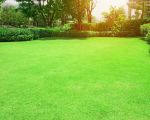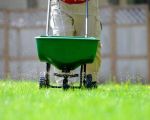
- Understanding Your Climate and Its Impact on Grass Selection
- Cool-Season vs. Warm-Season Grasses: Which Is Right for You?
- Top Grass Varieties for Various Climates
- Real-Life Examples of Grass Selection Success
- Professional Advice for Maintaining Your Lawn’s Health
1. Understanding Your Climate and Its Impact on Grass Selection
Choosing the best grass varieties for your climate is fundamental to creating and maintaining a lush, healthy lawn. Climate affects everything from the grass’s growth cycle to its resilience against drought, pests, and diseases. The first step in selecting the right grass involves understanding your local climate conditions — including temperature ranges, rainfall patterns, and seasonal changes.
For example, regions with harsh winters and moderate summers will require grass types that can endure cold dormancy periods, while warmer climates need grasses that tolerate heat and drought well. This climatic understanding helps narrow down the pool of suitable turfgrass, making your lawn care both effective and efficient.
Failing to consider climate often leads to frustration — you might choose a grass that looks good initially but struggles through the seasons, resulting in patchy, weak lawns. By tailoring your choice to your specific environment, you ensure your lawn thrives naturally with less maintenance.
1.1 Climate Zones and Their Influence on Grass Growth
Many professional landscapers refer to climate zones — such as USDA Hardiness Zones or Köppen Climate Classifications — to categorize regions. These zones guide which grass varieties flourish best in each area. For example, Zone 4, known for cold winters, favors grasses like Kentucky Bluegrass, while Zone 9, with mild winters and hot summers, is better suited for Bermuda grass.
This zoning insight is critical when you want to optimize lawn health without excessive watering, fertilizing, or pest control.
2. Cool-Season vs. Warm-Season Grasses: Which Is Right for You?
Grass varieties typically fall into two broad categories based on their preferred climate: cool-season and warm-season grasses. Understanding the difference between these types is essential for selecting turf that matches your environment.
2.1 Characteristics of Cool-Season Grasses
Cool-season grasses thrive in regions with cold winters and moderate summers. They grow actively during spring and fall and often go dormant during hot, dry summer months. Popular cool-season varieties include:
- Kentucky Bluegrass — known for its rich green color and fine texture.
- Fescues — drought tolerant and adaptable to shady areas.
- Perennial Ryegrass — fast germination and quick lawn establishment.
These grasses require proper irrigation and fertilization to withstand summer stress and recover in cooler seasons.
2.2 Characteristics of Warm-Season Grasses
Warm-season grasses are adapted to hot, sunny climates and thrive during summer, often going dormant in cooler weather. They generally have a coarser texture and deep root systems to survive droughts. Examples include:
- Bermuda Grass — durable and drought resistant, ideal for southern states.
- Zoysia Grass — dense growth that crowds out weeds and tolerates heavy foot traffic.
- St. Augustine Grass — performs well in coastal and humid areas.
These grasses require less water during their active growing season but can be sensitive to cold snaps.
3. Top Grass Varieties for Various Climates
Identifying the best grass varieties for your climate means focusing on the specific needs and challenges of your region. Below is a detailed look at some prime choices across different climate types.
3.1 Grass Varieties for Cold and Temperate Climates
In northern and temperate regions, Kentucky Bluegrass stands out due to its rich appearance and resilience. It forms a dense turf, perfect for high-traffic lawns, but requires adequate moisture to stay healthy. Fine Fescues, such as Creeping Red Fescue, provide excellent shade tolerance, ideal for lawns with tree cover. These grasses combine to offer lush, green yards that survive freezing winters.
3.2 Grass Varieties for Hot and Dry Climates
For arid or semi-arid climates, drought-resistant grasses like Bermuda and Buffalo grass dominate. Bermuda grass’s aggressive growth pattern helps it recover quickly from damage, making it popular for sports fields and home lawns alike. Buffalo grass, native to the Great Plains, needs minimal watering and fertilization, providing a sustainable turf option for environmentally conscious homeowners.
3.3 Grass Varieties for Humid and Coastal Regions
Warm, humid climates favor grasses like St. Augustine and Zoysia. St. Augustine is known for its thick, carpet-like growth and tolerance of salty soils common in coastal areas. Zoysia offers a fine texture and remarkable durability, resisting both heat and foot traffic. Both grasses require careful maintenance during wet seasons to prevent fungal issues.
4. Real-Life Examples of Grass Selection Success
To illustrate the importance of selecting the right grass for your climate, consider the case of a homeowner in Texas who initially planted Kentucky Bluegrass. Despite its popularity, the grass struggled with the state’s intense summer heat and frequent droughts, resulting in brown patches and high water bills. After consulting with local experts and Lawn Care Services, the homeowner transitioned to Bermuda grass, which flourished with less water and maintenance.
Similarly, a property manager in the Pacific Northwest chose a blend of fine fescue and perennial ryegrass, perfectly suited for the cool, wet climate. This blend resulted in a vibrant, durable lawn that stayed green almost year-round without requiring heavy fertilizers or watering.
These real-world examples show how critical it is to match grass varieties to local conditions to achieve the best results.
5. Professional Advice for Maintaining Your Lawn’s Health
Once the right grass variety is chosen, ongoing care determines the lawn’s success. Experts recommend tailored fertilization schedules, appropriate watering techniques, and seasonal mowing heights that correspond to your grass type.
For example, cool-season grasses benefit from fall fertilization to prepare for winter, while warm-season grasses require spring nutrient boosts to start vigorous summer growth. Watering should be deep and infrequent to encourage strong root development rather than frequent shallow watering.
For personalized guidance and access to high-quality turfgrass products or professional lawn maintenance, consider reaching out to Lawn Care Services. Their expertise can help homeowners optimize lawn health, saving time and money in the long run.








